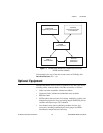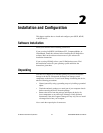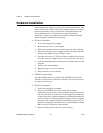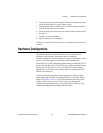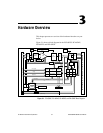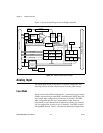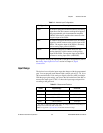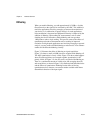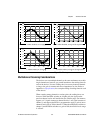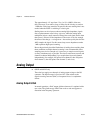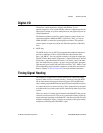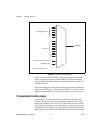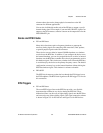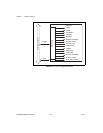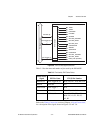Chapter 3 Hardware Overview
6023E/6024E/6025E User Manual 3-4 ni.com
Dithering
When you enable dithering, you add approximately 0.5 LSB
rms
of white
Gaussian noise to the signal to be converted by the ADC. This addition is
useful for applications involving averaging to increase the resolution of
your device, as in calibration or spectral analysis. In such applications,
noise modulation is decreased and differential linearity is improved by the
addition of dithering. When taking DC measurements, such as when
checking the device calibration, enable dithering and average about
1,000 points to take a single reading. This process removes the effects of
quantization and reduces measurement noise, resulting in improved
resolution. For high-speed applications not involving averaging or spectral
analysis, you may want to disable dithering to reduce noise. Your software
enables and disables the dithering circuitry.
Figure 3-3 illustrates the effect of dithering on signal acquisition.
Figure 3-3a shows a small (±4 LSB) sine wave acquired with dithering off.
The ADC quantization is clearly visible. Figure 3-3b shows what happens
when 50 such acquisitions are averaged together; quantization is still
plainly visible. In Figure 3-3c, the sine wave is acquired with dithering on.
There is a considerable amount of visible noise, but averaging about 50
such acquisitions, as shown in Figure 3-3d, eliminates both the added noise
and the effects of quantization. Dithering has the effect of forcing
quantization noise to become a zero-mean random variable rather than a
deterministic function of the input signal.



